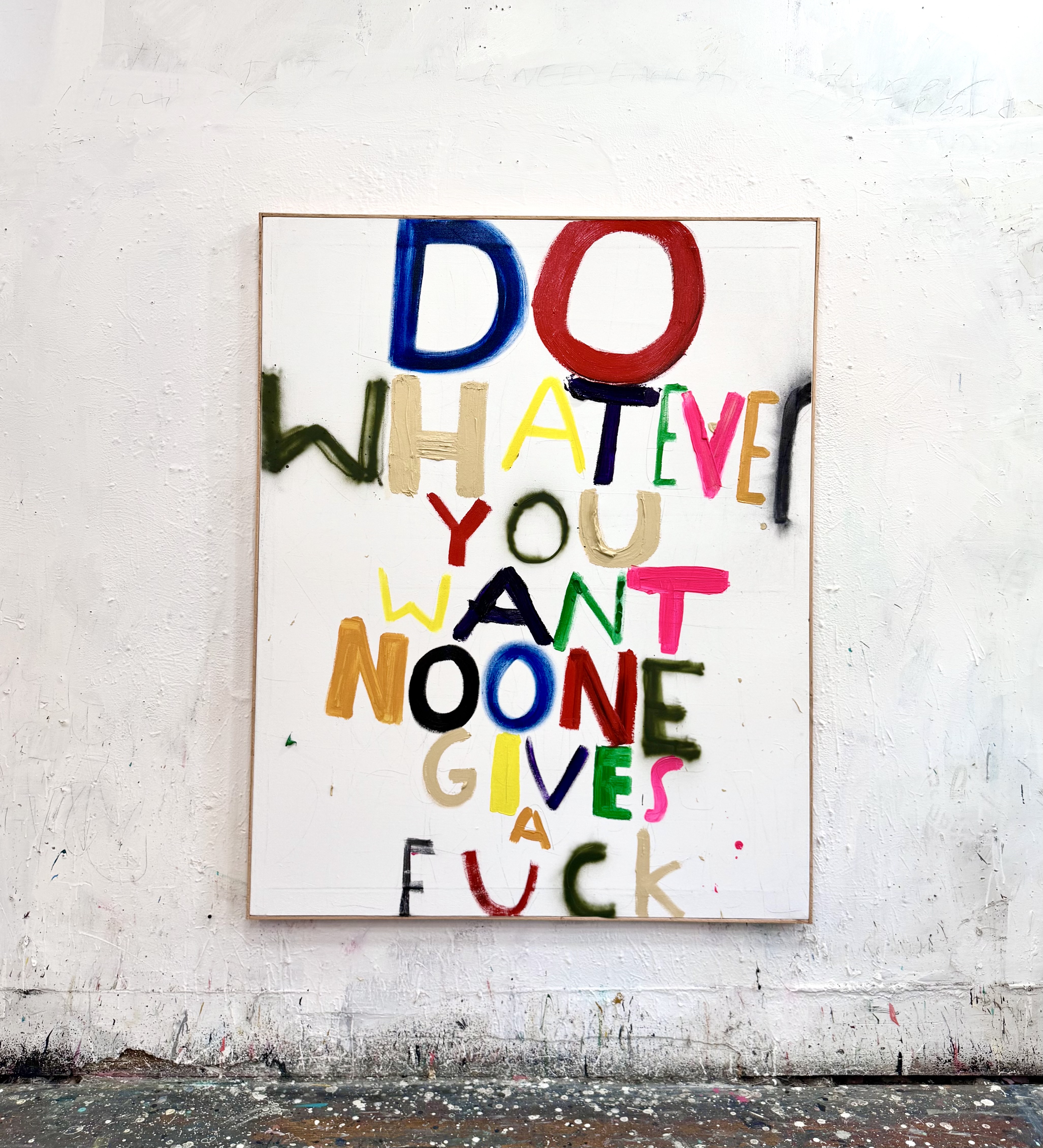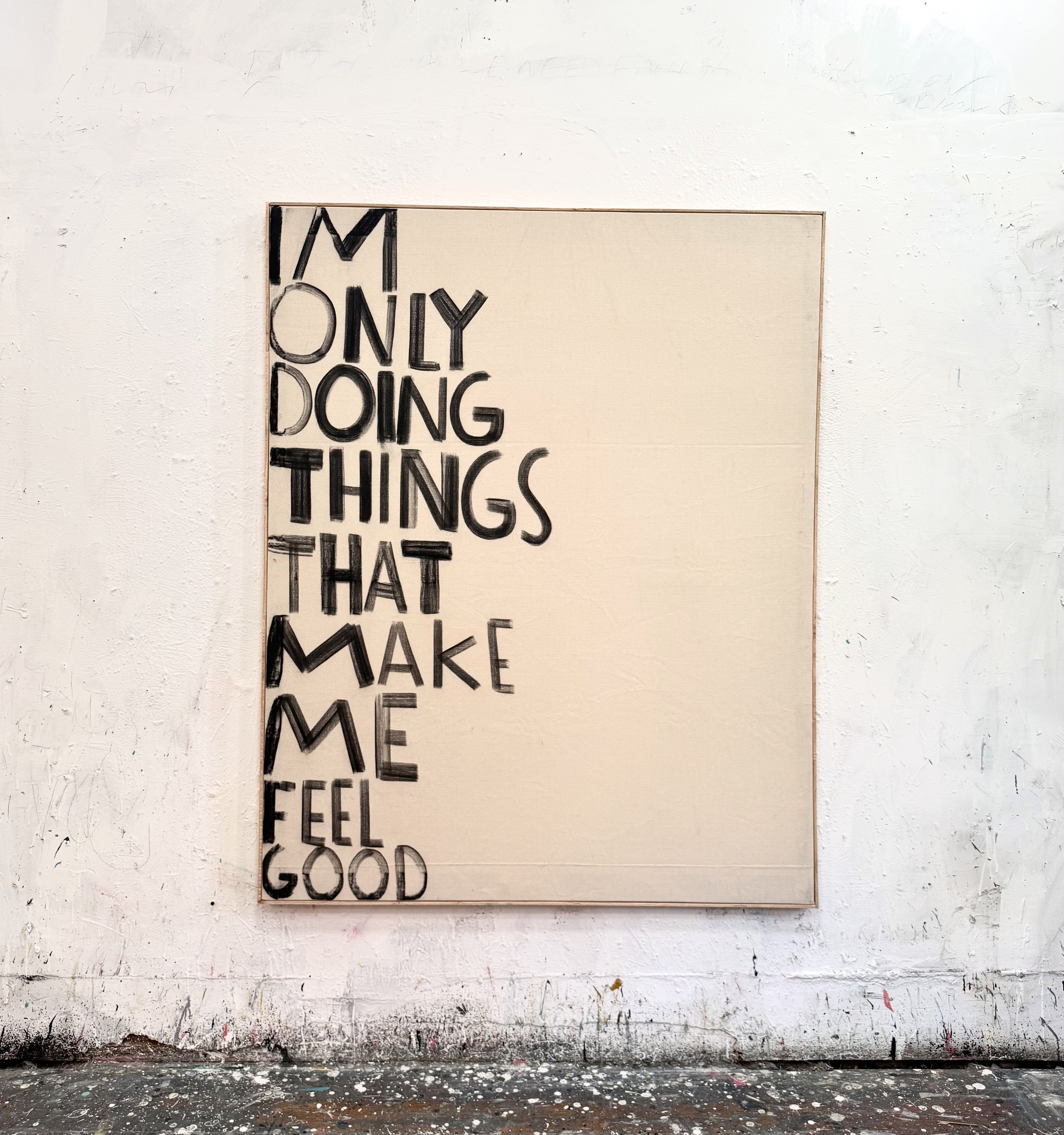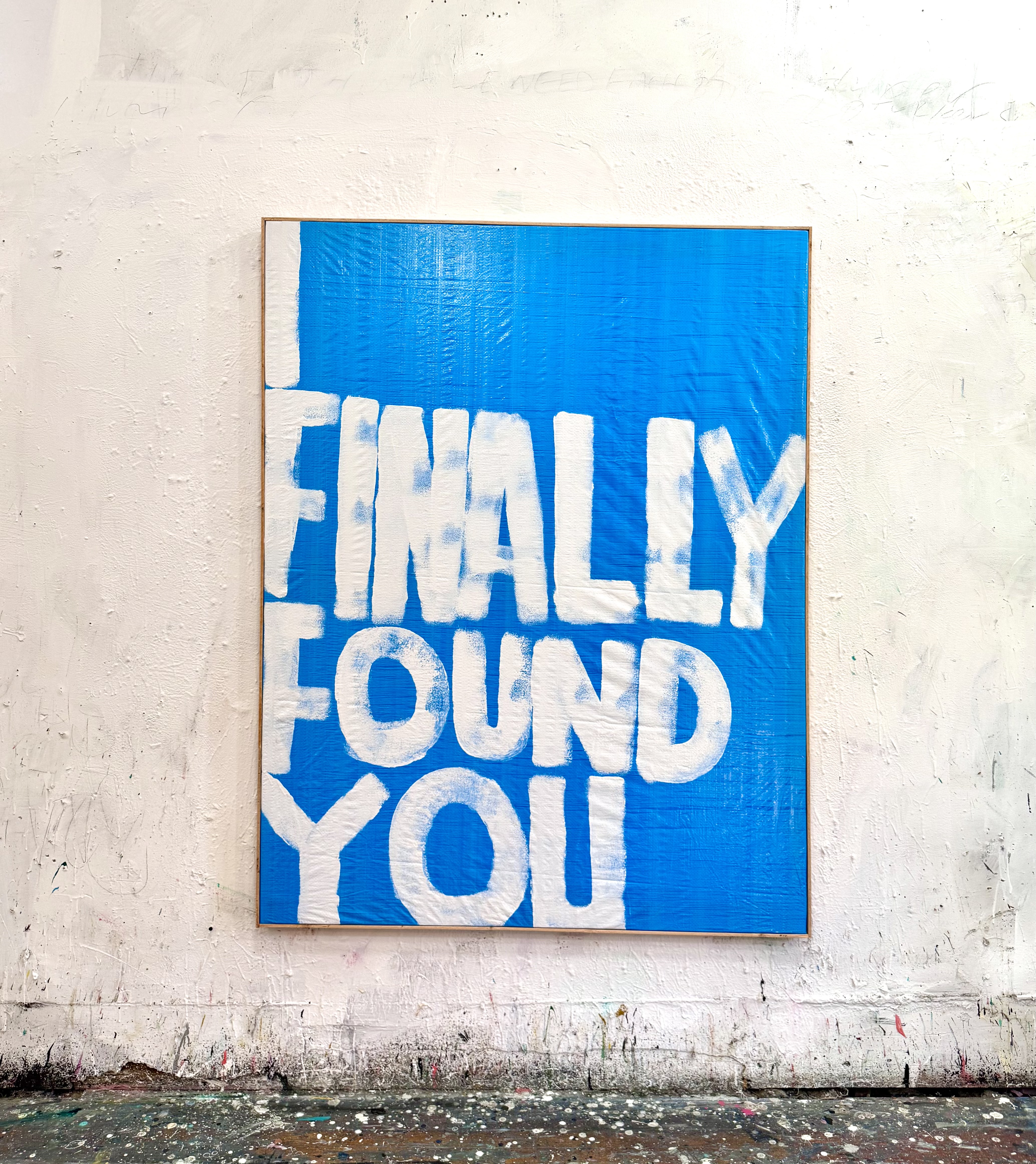Eric Stefanski’s art is a bold, irreverent, and emotionally honest exploration of language, vulnerability, and the role of the artist—but it’s also something rarer: a practice that has sustained both critical and commercial momentum in a crowded contemporary art landscape. Over the past decade, Stefanski has carved out a distinctive space in the market, maintaining a resonance that transcends art-world trends. His work remains as in-demand as it is introspective, appealing to collectors, curators, and audiences who crave authenticity in an era saturated with irony.

Working primarily in text-based painting, Stefanski uses humor and confession to peel back the layers of contemporary life and art-making. His phrases—simultaneously self-deprecating and self-aware—form the backbone of his enduring popularity. Collectors and institutions have gravitated toward his works not only for their raw immediacy but also for the rare combination of accessibility and depth they provide. Each piece functions as both a visual statement and an emotional mirror, capturing the uneasy comedy of being human in the 21st century.
Stefanski treats words as a tactile medium, as expressive as any gesture of paint. His thick, unpolished brushstrokes and intentionally imperfect compositions reinforce the physical and emotional texture of his language. In an art world that often prizes sleek conceptualism or digital polish, Stefanski’s handmade aesthetic feels defiant and refreshing. This authenticity—an unfiltered honesty that feels at once fragile and confident—is a key factor behind his sustained market value. His collectors often cite a visceral connection to the work, describing it as both deeply personal and universally relatable.

His phrases—“I don’t know if this is good art,” “Please love me,” or “It’s fine, I’m fine”—read like diary fragments, existential observations, or ironic mantras. They make audiences laugh, wince, and reflect, often all at once. By merging humor and sincerity, Stefanski manages to capture something timeless about creative doubt and human vulnerability. That duality—the ability to be both funny and devastatingly real—has made his work a mainstay in galleries and art fairs alike. While many artists fade after a season of buzz, Stefanski’s appeal continues to grow precisely because he never stops questioning himself or his medium.
What distinguishes Stefanski from his conceptual predecessors is his insistence on emotional truth through irony. His words may mock the art world’s pretensions, but they also confess to wanting its approval. This honesty has become part of his brand—a paradoxical mix of self-awareness and sincerity that resonates deeply with a generation skeptical of both institutions and authenticity. His collectors recognize that paradox as his greatest strength: the ability to turn doubt into something collectible, even aspirational.
Stefanski’s market trajectory mirrors his artistic evolution. As his work has been featured in major galleries and exhibitions, demand for his paintings has remained consistent, with prices steadily rising. His pieces, often large-scale and unmistakably direct, occupy a space that bridges contemporary conceptualism and emotional expressionism. They’re as likely to appear in a serious art collection as they are to go viral online—proof of his rare ability to operate simultaneously in the worlds of high art and popular culture.

In a broader sense, Stefanski’s sustained popularity speaks to the ongoing hunger for authenticity in art. Viewers and collectors alike are drawn to artists who expose rather than conceal their creative insecurities. Stefanski’s humor isn’t a gimmick—it’s a strategy for survival and connection. His art articulates the contradictions of our time: the pressure to perform sincerity, the exhaustion of constant visibility, and the absurdity of finding meaning in an unstable world.
Ultimately, Eric Stefanski’s success lies not in the perfection of his technique but in the imperfection of his honesty. His work endures because it refuses to settle—for clarity, for comfort, or for certainty. In doing so, Stefanski has transformed vulnerability into value. His canvases remind us that in both art and life, the most marketable commodity might just be the courage to tell the truth.

